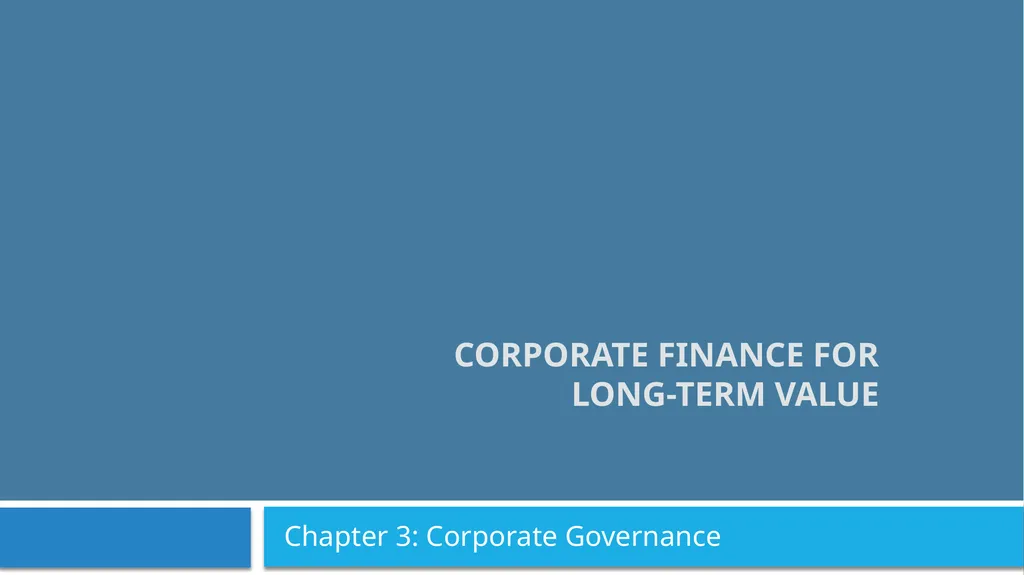Corporate Finance for Long-Term Value Chapter 3:
Author : faustina-dinatale | Published Date : 2025-05-29
Description: Corporate Finance for LongTerm Value Chapter 3 Corporate Governance Chapter 3 Corporate Governance Part 1 Why corporate finance for longterm value The BIG Picture 3 Current corporate finance maximises financial value from financial
Presentation Embed Code
Download Presentation
Download
Presentation The PPT/PDF document
"Corporate Finance for Long-Term Value Chapter 3:" is the property of its rightful owner.
Permission is granted to download and print the materials on this website for personal, non-commercial use only,
and to display it on your personal computer provided you do not modify the materials and that you retain all
copyright notices contained in the materials. By downloading content from our website, you accept the terms of
this agreement.
Transcript:Corporate Finance for Long-Term Value Chapter 3::
Corporate Finance for Long-Term Value Chapter 3: Corporate Governance Chapter 3: Corporate Governance Part 1: Why corporate finance for long-term value? The BIG Picture 3 Current corporate finance maximises financial value from financial shareholder perspective, ignoring social and environmental externalities Single objective facilitates accountability in corporate governance Solution Expand company objective from FV to IV (= FV + SV + EV) Include current and future generations as stakeholders, alongside shareholders Broaden board diversity and expertise to deal with expanded objective Accountability: single integrated value measure facilitates accountability Incentives: include social and environmental KPIs in performance pay Core problems in corporate governance 4 Corporate governance refers to the mechanisms, relations and processes by which a company is controlled and directed At the core of corporate governance there are two problems: Information asymmetry between principals and agents Agency problem: agents may not act in interest of principals Shareholder model 5 Agency theory focuses on conflicts between owners (shareholders) as principals and managers as agents Accountability of managers and the scope for correction (removal of management) Managers might be incentivised to focus on short-term profits Common law countries (i.e., US, UK, Canada): dispersed shareholders & active trading in stock markets Civil law countries (i.e., Europe, Asia): controlling shareholders, less active market for corporate control and management is held less accountable Stakeholder model 6 Stakeholder model argues that managers should balance the interests of all stakeholders, including financial agents (shareholders and debtholders) and social agents (employees, consumers, suppliers) System of co-determination: both shareholders and employees can appoint representatives to a company’s board Corporate governance codes define best practices in corporate governance Codes have started to address the narrow shareholder perspective and short-termism In NL and UK, codes include long-term value creation for stakeholders as a corporate objective Governance and company value 7 Well-run companies are better able to realise their long-term value potential by making better (investment) decisions Strong correlation between company-level governance and the broad institutional setting of a country Corporate scandals reveal classical agency problems in companies across the world: Americas: Collapse of Enron in 2001 Asia: Olympus-scandal in 2011 Europe: Volkswagen-scandal in 2015 Comparing corporate governance models 8 Objective of the firm 9 Shareholder value (Friedman, 1970; Jensen, 2002) Division of labour: companies -> FV; governments -> SV + EV But two problems externalities happen at level of companies (part of business model) regulation cannot effectively capture all externalities Shareholder welfare














